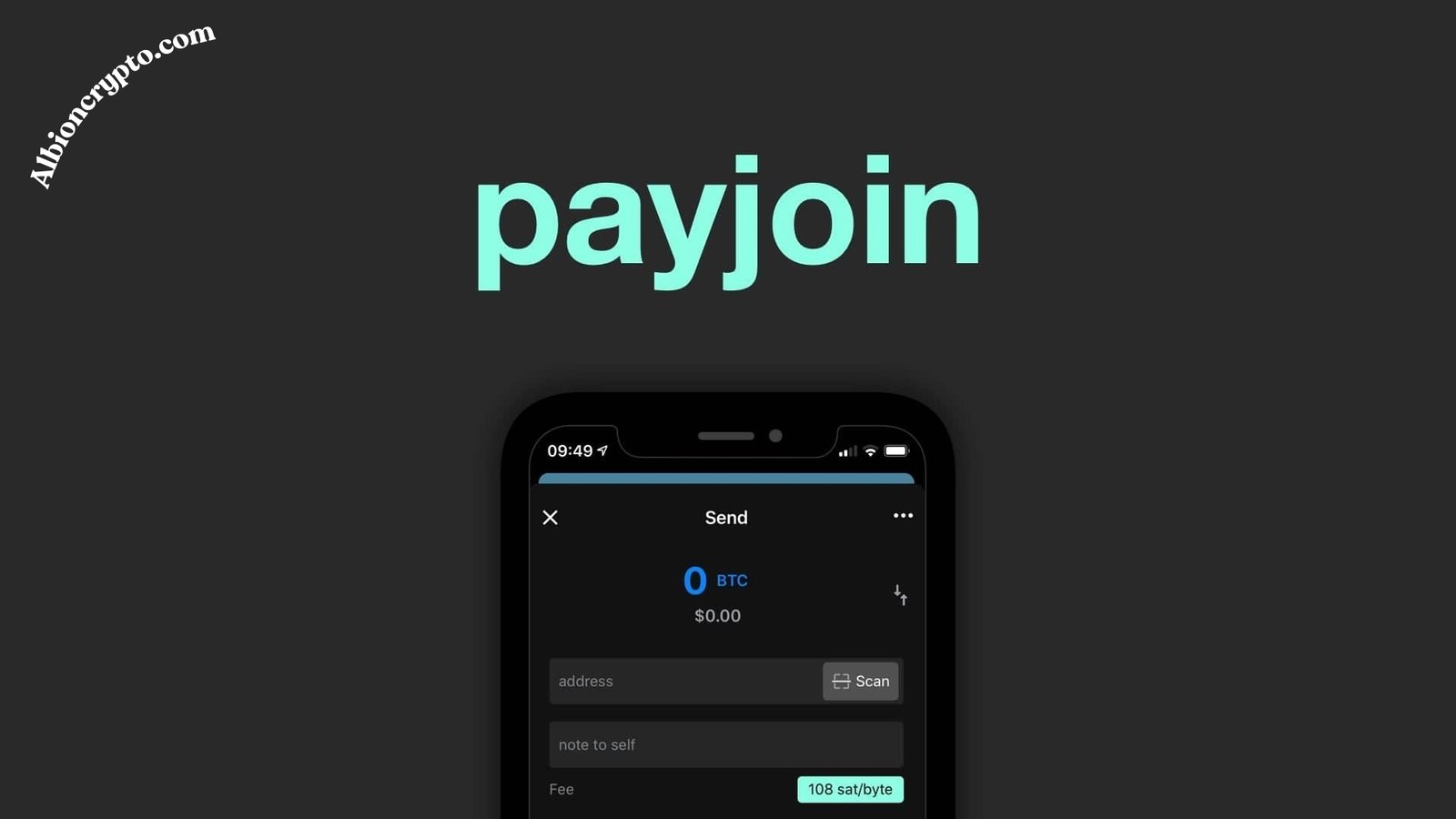Bitcoin has always been at the forefront of the cryptocurrency revolution, leading the charge for decentralized finance and personal financial sovereignty. However, one area where it has faced criticism is in the privacy department. While Bitcoin transactions are pseudonymous, they are not entirely private, as they are recorded on a public ledger that anyone can access. This has led to various innovations to enhance Bitcoin’s privacy features, one of the most notable being Silent Payments.
Silent Payments represent an evolution in how Bitcoin transactions can be conducted, primarily focusing on privacy. This article will explore Silent Payments, their work, and their implications for Bitcoin users and the broader cryptocurrency ecosystem.
What Are Bitcoin Silent Payments?
Silent Payments is a proposed method of sending Bitcoin transactions that enhances the privacy of both the sender and receiver. In traditional Bitcoin transactions, the sender explicitly indicates the recipient’s public address on the blockchain, which makes it relatively easy for external observers to track payments and link addresses to specific individuals. Silent Payments aims to obscure this process by allowing the recipient to generate new addresses for each payment without interacting with the sender.
The essence of Silent Payments is that the recipient can derive multiple addresses from a single public key without the sender knowing which specific address is being used. This means an external observer cannot link payments to a single address or individual, thus enhancing privacy for both parties.
Silent Payments can be seen as a natural evolution of privacy techniques like Stealth Addresses and PayJoin. However, they offer several unique advantages that set them apart from these older methods, particularly scalability and ease of use.
How Do Silent Payments Work?
Silent Payments uses elliptic curve multiplication cryptography. First, the recipient generates a “silent payment key” (SPK), a single public key. The recipient can use elliptic curve operations to generate practically unlimited addresses from this key. Senders use the recipient’s SPK to create a payment address. Our innovation is that the sender only knows that the payment is going to the correct recipient, not the address.

A Silent Payment differs from a Bitcoin transaction from the sender’s standpoint. After entering the amount and the recipient’s SPK, the transaction is published to the network. However, the recipient can verify the payment by checking the blockchain for transactions with the same addresses as the original transaction.
This method offers several key advantages over traditional Bitcoin transactions:
- Enhanced Privacy: Third parties have difficulty tracking payments because the sender doesn’t know the recipient’s address, and the recipient uses various addresses for each transaction. This is much better than standard Bitcoin transactions, which can be tied to a single address.
- Reduced Address Reuse: A well-known privacy concern in Bitcoin is the practice of reusing addresses. It is much simpler for third-party observers to establish a connection between many transactions when users reuse the same address for multiple transactions. Silent Payments helps to alleviate this problem by guaranteeing that every payment is made using a different address.
- Compatibility: Silent Payments are designed to be entirely compatible with the current Bitcoin protocol, which is one of the most exciting aspects of these payments. They can be deployed without significantly modifying the Bitcoin network or consensus rules.
- Scalability: Unlike other privacy-enhancing techniques, Silent Payments do not significantly burden the Bitcoin network. They do not require additional transactions or data to be stored on the blockchain, making them a scalable solution for enhancing privacy.
Advantages of Silent Privacy Solutions
To fully appreciate the potential of Silent Payments, it’s essential to compare them to other privacy solutions currently existing in the Bitcoin ecosystem.
Stealth Addresses
Stealth Addresses were an earlier attempt to improve privacy in Bitcoin transactions. They enable the sender to generate a one-time address for the receiver, which can only be decrypted by the recipient. Although this offers a certain degree of anonymity, it has several problems.
For example, stealth addresses require additional data to be stored on the blockchain, which can lead to scalability issues. Additionally, they can be complex to implement and use. Silent Payments improves stealth addresses by eliminating the need for additional data storage and simplifying the generation and use of addresses. This makes them a more practical and scalable solution for everyday use.
PayJoin (P2EP)
PayJoin, or Pay-to-EndPoint (P2EP), is another privacy-enhancing technique for Bitcoin transactions. It works by having both the sender and the recipient contribute inputs to a transaction, which makes it harder for external observers to determine who is paying whom. PayJoin has gained some traction in the Bitcoin community, particularly among privacy-conscious users.

However, PayJoin has some limitations. It requires both parties to be online and interact with each other during the transaction process, which can be inconvenient. Additionally, it is incompatible with all wallets and may require special software or infrastructure. Silent Payments, on the other hand, do not require any interaction between the sender and recipient, making them easier to use and more widely compatible.
CoinJoin
CoinJoin is a popular method for improving Bitcoin privacy by mixing multiple users’ transactions, making it harder to trace the flow of funds. While CoinJoin can effectively obfuscate transaction history, it has several downsides. For one, it requires coordination between multiple users, which can be time-consuming and costly. Additionally, CoinJoin transactions are often larger and more complex than regular Bitcoin transactions, which can result in higher fees and slower confirmation times.
Silent Payments offers a more straightforward approach to privacy. They do not require mixing transactions or user coordination, making them simpler and more efficient. Additionally, since Silent Payments do not require additional data or complexity, they can be processed as quickly and cheaply as regular Bitcoin transactions.
Challenges and Limitations of Silent Payments
While silent payments offer many advantages, they have challenges and limitations.
Detection and Scanning
One of the primary challenges of Silent Payments is that the recipient needs to scan the blockchain to detect incoming payments. This can be computationally expensive, especially for users who receive many transactions or want to check the blockchain frequently. To address this, specialized wallet software may need to be developed to scan the blockchain for Silent Payments efficiently.
Address Management
The administration of derived addresses is yet another potential problem. Users must maintain track of many addresses and the private keys linked with them because each Silent Payment produces a new address. Even though wallet software can already automate this process, it still introduces some complexity that users must be aware of.
Adoption
As with any new technology, adoption is a critical factor in the success of Silent Payments. While the concept is compatible with the existing Bitcoin protocol, it will require changes to wallet software and user behavior. Silent Payments may take time for widespread adoption, especially if users are already comfortable with existing privacy solutions like CoinJoin or PayJoin.
Legal and Regulatory Considerations
As privacy-enhancing technologies become more prevalent, they may attract scrutiny from regulators and law enforcement agencies. Bitcoin users who prioritize privacy may need to know the legal implications of using Silent Payments, especially in jurisdictions with strict anti-money. Laundering laws: The laundering (AML) and know-your-customer (KYC) regulations. It remains to be seen how Silent Regulators will perceive payments and whether any restrictions will be placed on their use.
Future of Bitcoin Privacy and Silent Payments
The development of Silent Payments represents a significant step forward for Bitcoin privacy. However, as more users become aware of privacy’s importance and privacy-enhancing technologies continue to evolve, silent Payments will likely become an increasingly popular solution for those looking to protect their financial information.
However, the future of Bitcoin privacy is not limited to Silent Payments alone. Other innovations, such as Taproot and Schnorr Signatures, are also poised to improve privacy. The Bitcoin network makes transactions more efficient and complex to analyze. Combined with Silent Payments, these technologies could pave the way for a new era of privacy in Bitcoin. They are where users have greater control over their financial data and can confidently transact.
Conclusion
Silent Payments are a promising development in the ongoing quest to enhance privacy in Bitcoin transactions. It allows users to generate new addresses for each payment without revealing them. Their identity or transaction history, Silent Payments, offers a simple yet effective way to improve privacy on the Bitcoin network. At the same time, there are still challenges to overcome, such as blockchain scanning and adoption. The potential benefits of Silent Payments make them a compelling solution for anyone looking to enhance their privacy in cryptocurrency.



